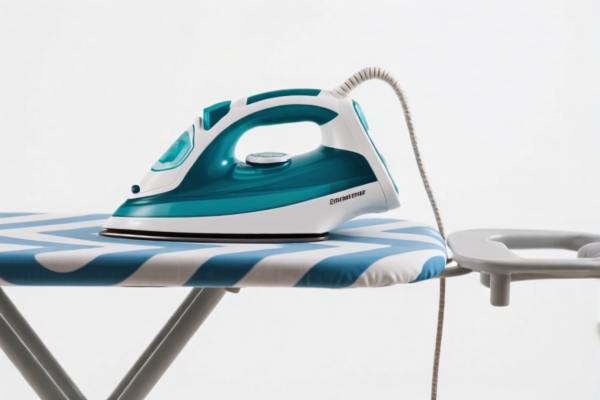| HS Code | Official Doc | Tariff Rate | Origin | Destination | Effective Date |
|---|---|---|---|---|---|
| 8468801000 | Doc | 57.9% | CN | US | 2025-05-12 |
| 8515110000 | Doc | 57.5% | CN | US | 2025-05-12 |
| 8543708000 | Doc | 55.0% | CN | US | 2025-05-12 |
| 8543708000 | Doc | 55.0% | CN | US | 2025-05-12 |
| 7321811000 | Doc | 57.9% | CN | US | 2025-05-12 |
| 7321815000 | Doc | 62.5% | CN | US | 2025-05-12 |
| 7326908688 | Doc | 82.9% | CN | US | 2025-05-12 |
| 7326908676 | Doc | 82.9% | CN | US | 2025-05-12 |
| 8205517500 | Doc | 58.7% | CN | US | 2025-05-12 |
| 8205593080 | Doc | 55.0% | CN | US | 2025-05-12 |
| 8206000000 | Doc | The rate of duty applicable to that article in the set subject t+30.0% | CN | US | 2025-05-12 |




Soldering Iron
A soldering iron is a hand tool used for joining two or more metal items using solder. It provides concentrated heat locally to melt the solder and form a permanent bond between the parts.
Materials
- Heating Element: Typically resistive heating elements made of nickel-chromium alloys. These convert electrical energy into heat. More advanced irons may use ceramic heaters for faster heating and more precise temperature control.
- Tip: The business end of the iron, available in a variety of shapes and materials. Common materials include copper, often plated with chrome or other protective layers. Tip shape is crucial for specific soldering tasks.
- Handle: Usually made of plastic or heat-resistant composite materials, designed for comfortable and safe grip.
- Body/Housing: Encloses the heating element and provides electrical insulation. Often made of metal or durable plastic.
- Power Cord: Supplies electricity to the heating element. Some irons are cordless, utilizing rechargeable batteries.
Purpose
The primary purpose of a soldering iron is to create a reliable electrical connection between components. This is achieved by melting solder, a metallic alloy with a relatively low melting point, which flows into the joint and solidifies, creating a conductive path. Soldering is also used for mechanical bonding, though electrical conductivity is often the main goal.
Function
A soldering iron functions by:
- Heat Generation: Electrical current passes through the resistive heating element, generating heat.
- Heat Transfer: Heat is conducted through the tip to the components being soldered.
- Solder Melting: The heat raises the temperature of the components and the solder to above the solder's melting point.
- Wetting & Bonding: Molten solder flows between the components due to capillary action and surface tension (wetting). As it cools, it solidifies, creating a metallurgical bond and an electrical connection.
Usage Scenarios
- Electronics Assembly: Connecting components on printed circuit boards (PCBs). This is the most common application.
- Electrical Repair: Fixing broken connections in wiring, appliances, and electronic devices.
- Jewelry Making: Joining metal pieces in jewelry fabrication.
- Plumbing: Joining copper pipes (using specialized solder and flux).
- Hobbyist Projects: Used in DIY electronics, model building, and other crafts.
Common Types
- Traditional/Basic Soldering Irons: Simple designs with fixed temperature settings. Often inexpensive, suitable for basic tasks.
- Temperature-Controlled Soldering Irons: Feature adjustable temperature settings, providing more precise control and preventing damage to sensitive components. Digital displays are common.
- SMD/Rework Stations: Designed for surface-mount device (SMD) soldering and rework. Include hot air guns and other specialized tools.
- Cordless Soldering Irons: Battery-powered, offering portability. Often have lower power output than corded models.
- Through-Hole Soldering Irons: Designed for components with leads that pass through holes in a PCB. Tips are typically chisel or conical shaped.
- Hakko Soldering Irons: A popular brand known for high-quality, durable, and temperature-controlled irons. Often considered a professional-grade option.
Soldering iron tools fall under various classifications depending on their specific features and applications. Here's a breakdown of relevant HS codes based on the provided information:
-
8515.11.00.00: This HS code covers electric (including electrically heated gas), laser or other light or photon beam, ultrasonic, electron beam, magnetic pulse or plasma arc soldering, brazing or welding machines and apparatus, whether or not capable of cutting; electric machines and apparatus for hot spraying of metals or cermets; parts thereof. Specifically, it includes soldering irons and guns.
- 85: Electrical machinery and equipment and parts thereof; sound recording or reproducing apparatus, television-image multiplier tubes.
- 15: Electrical machines and apparatus having individual functions not specified or included elsewhere in this chapter.
- 11: Brazing or soldering machines and apparatus.
- 00: Soldering irons and guns.
- The applicable tax rate is a base tariff of 2.5%, a surcharge of 25.0%, and a surcharge of 30.0% after April 2, 2025, resulting in a total tariff of 57.5%.
-
8468.80.10.00: This HS code covers machinery and apparatus for soldering, brazing or welding, whether or not capable of cutting, other than those of heading 8515; gas-operated surface tempering machines and appliances; parts thereof. Specifically, it includes other machinery and apparatus: Hand-directed or -controlled.
- 84: Nuclear reactors, boilers, machinery and mechanical appliances; parts thereof.
- 68: Machinery and apparatus for soldering, brazing or welding, whether or not capable of cutting, other than those of heading 8515; gas-operated surface tempering machines and appliances; parts thereof.
- 80: Other machinery and apparatus.
- 10: Hand-directed or -controlled.
- The applicable tax rate is a base tariff of 2.9%, a surcharge of 25.0%, and a surcharge of 30.0% after April 2, 2025, resulting in a total tariff of 57.9%.
Regarding HS code 8515.11.00.00, please note that this classification specifically covers electric soldering irons and guns. If the soldering iron is not electric, HS code 8468.80.10.00 may be more appropriate.
Customer Reviews
No reviews yet.